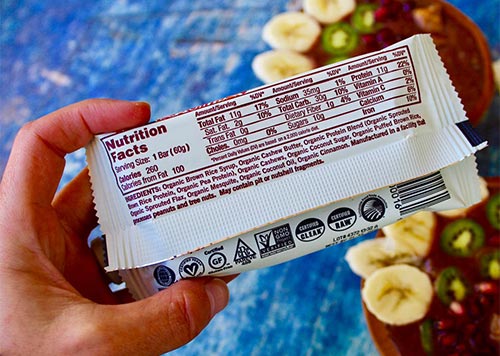10 Ways to Reduce Your Carbon Footprint
As global temperatures rise, our local and global ecosystems are impacted by our collective activity and carbon footprints.
Society’s increasing carbon footprint is continuously harming our environment for us and all living things, so it's important for all of us to do what we can to help sustain our planet & our many ecosystems.

Your carbon footprint is the amount of greenhouse gases - including carbon dioxide, methane, nitrous oxide, and fluorinated gases - that you produce as you live your life. Reducing your carbon footprint in any way you can, big or small, not only helps conserve energy, but helps put a stop to global warming as well.
There are a lot of actions you can take in attempt to live green, we’ve put together a list of 10 ways to reduce your carbon footprint to help you get started.
1. Eat lower on the food chain
One of the biggest negatives with animal production is the amount of resources that it uses and waste that it produces. Because of the high level of carbon associated with meat production and because Americans eat so much meat in general, eating “lower on the food chain” is better for individual health and the planet. Eating lower on the food chain means eating mostly fruits, veggies, grains, and beans. Eating lower on the food chain doesn't have to be difficult, it can be as simple as choosing to eat seasonally, buying produce from farmers markets or participating in meatless mondays.
2. Conserve water
It takes a lot of water to produce the food we eat, the energy we consume and all the things we buy. Getting into a habit of conserving water and being conscious of the amount you use is a great way to reduce your carbon footprint and live more sustainably. There’s a lot of actions you can take when trying to conserve the amount of water you use, these are just a few:
- Turn off the water while you brush your teeth
- Spend only 5 minutes in the shower
- Water your plants in the early morning or evening to reduce evaporation
- Water your lawn 1 to 2 days a week instead of 5 days a week
- Use less hot water - by washing your clothes in cold water, and using cold water to wash your dishes, you can save the energy it takes to heat the water
- Wash only full loads of laundry and dishes
3. Urban composting
“Think of composting as nature’s recycling,” says Andrew Olesh, outreach coordinator at the Queens Botanical Garden. “Composting yields a nutrient-rich, biologically diverse soil amendment,” Olesh says. “It’s not fertilizer - fertilizer’s synthetic. It’s more like a prebiotic that helps soil live and thrive.” Composting helps to reduce greenhouse gas emissions that come from the decomposition of organic matter that takes place in landfills. You can start your own compost at home simply by collecting all of your food scraps and storing them in your freezer. You can even start a community composting project through your apartment building or neighborhood.
4. Buy air-filtering houseplants
In 1989, NASA discovered that houseplants can absorb harmful toxins from the air, especially in enclosed spaces with little air flow. Certain houseplants have the ability to absorb whatever is in the air, including carbon monoxide fumes, and their roots and leaves help to remove impurities before releasing newly manufactured oxygen into the space. Although plants have less strength than air purifiers, they’re more natural, cost effective, and therapeutic. Houseplants not only freshen up the air that we breathe in an environmentally friendly way, but also allow us to more intimately connect with nature.
5. Line-dry your clothes
One dryer load uses 5 times more electricity than washing - by simply line-drying your clothes, you can save 1/3 of their carbon footprints. If all Americans line-dried for just half a year, it would save 3.3% of the country’s total residential output of carbon dioxide, experts say.
6. Donate excess food
if you end up with more food than you can eat, donating it, or giving it to someone in need, especially if it will go bad within the next few days - is a great way to reduce food waste! Not only does donating excess food help reduce someone else’s carbon footprint, but it helps you prevent unnecessary increases to your own as well.
7. Switch out your light bulbs
If you use incandescent bulbs in your home, it’s time to make a change! Because of the excess heat they generate, incandescents use electricity inefficiently, adding money to your electricity bill and your home cooling expenses. The energy savings of cooler-burning bulbs like CFLs (compact fluorescents) or LEDs (light-emitting diodes) have a significant impact on your utility bills and on making your home greener.
8. Install solar panels
Solar energy creates clean, renewable power from the sun and benefits the environment immensely. By installing solar panels, you can help reduce your dependence on fossil fuels in favor of one of the most abundant, consistent sources of energy we have available: our sun! If you are not able to install solar panels, you can join a community solar program, where you can buy into shared solar projects and earn savings on your energy bill based on your share of solar production each month.
9. Travel smart
Most forms of travel, whether it be flying, driving, or even public transportation has a harsh impact on the planet. Choosing to bike, walk or carpool, helps to reduce greenhouse gas emissions, traffic congestion and our demand for oil.
10. Reuse where you can
Getting into the habit of reusing everyday items, can help you, your community, and the environment by saving money, energy, and natural resources. Below are a few ways to reuse everyday products:
- Bring your reusable shopping bag to the grocery store
- Bring a reusable mug to the coffee shop
- Reuse single-sided printed pages for scratch paper
- Drink water from used mason jars
- Use washable cloth napkins, sponges, and dish cloths
- Pack lunches in reusable containers
Final thoughts
Each person makes a daily environmental impact. If we can shift our choices and take small steps to reduce our carbon footprint, the planet will thank us for it!
You can start the process by calculating your carbon footprint here.









